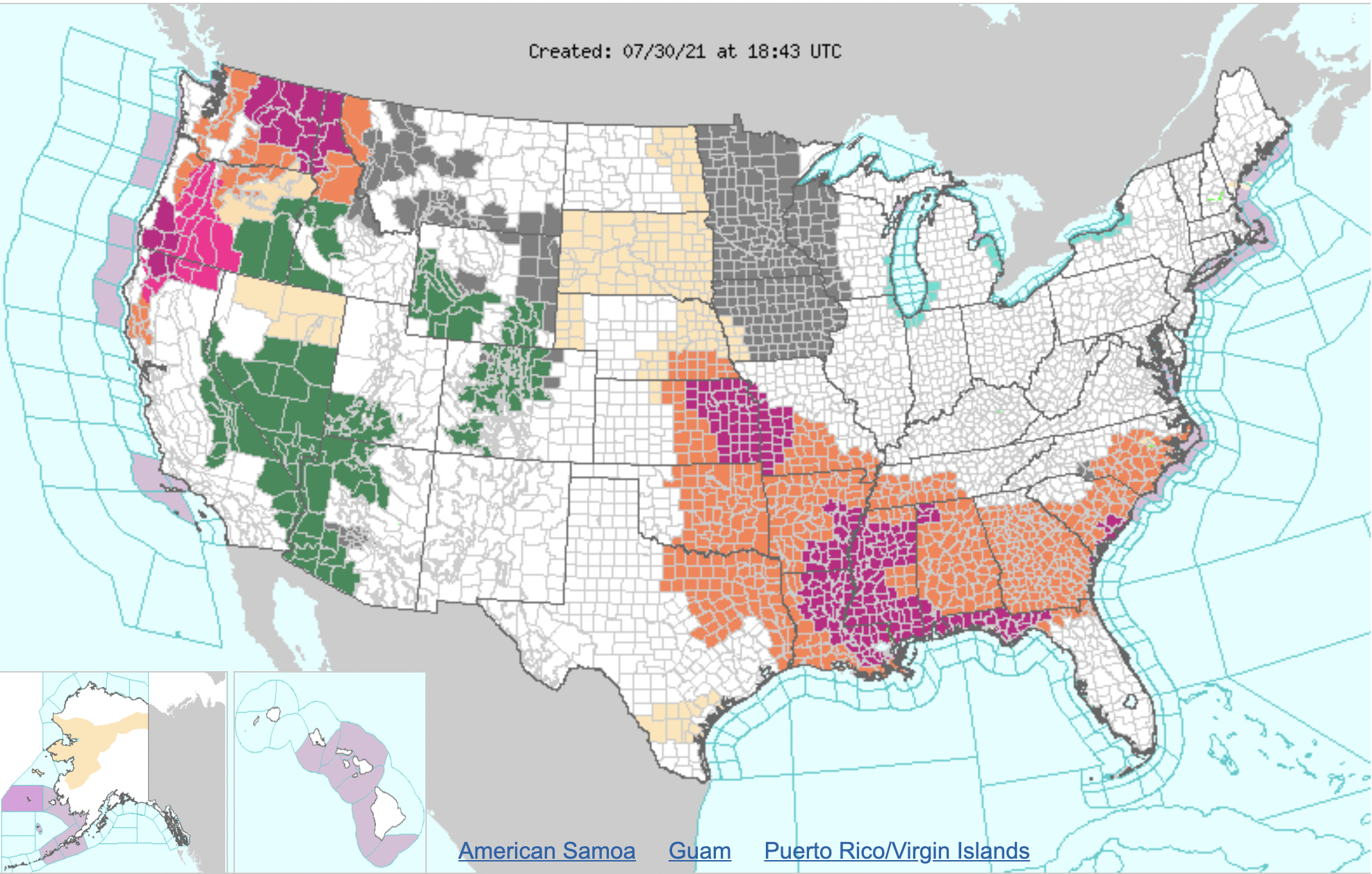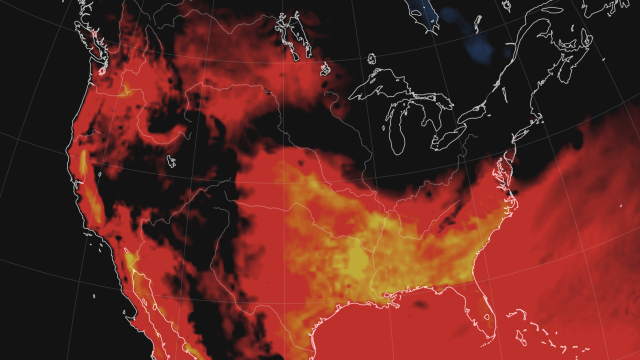Extreme heat is blanketing a huge portion of the country, save those in the Great Lakes and New England (you lucky, lucky bastards). A staggering 81 million are living in areas under some form of heat warning from the U.S. National Weather Service.
The latest heat wave is, in some ways, the worst to hit the U.S. yet. Regional heat has been the name of the game this summer, but the current heat wave is shocking in both its scope and magnitude. Triple-digit temperatures are affecting locations as diverse as Washington and Louisiana.
For heat-weary locales, the bad news is high temperatures are expected to persist into the weekend in many locations. Even worse, the heat is expected to intensify next week across parts of the Pacific Northwest and Northern Rockies. It’s the story of the summer, yes. But also the story of the climate change era where extreme heat is the norm and nowhere is immune from its impacts.
Our Terrible Friend, the Heat Dome
This summer, we’ve had ample opportunities to talk about heat domes. Which sucks because they suck. Or at least, they suck if you prefer your weather to not be some version of sauna or steam room.
Right now, a large area of the U.S. is trapped under high pressure. That locks in largely sunny skies, which intensifies the heat on the ground, which in turn locks in even more high pressure. It’s a vicious cycle that’s played out all too often this year. The most extreme example is the one that roasted the Pacific Northwest in late June and early July. But other heat domes have formed and led to eye-popping temperatures, including Death Valley tying the highest reliably recorded temperature anywhere on Earth. (It tied a record set in the same place last year because this is the world we live in.)
Still, this week’s iteration stands out for how widespread the heat is. Seriously, look at this weather warning map from the National Weather Service. Red, purple, and orange are where it’s too damn hot. And as you can see, things are too damn hot in a lot of locations across the U.S. right now.

Some of the other colours aren’t exactly great, either, and may also be tied to the heat. Grey, for instance, means poor air quality. Those alerts are happening in places downwind from wildfires that are being pumped up by the heat. In the Northwest, firefighting crews battling the Bootleg Fire, the largest blaze in the U.S., have said they “need to be prepared for anything” due the rising heat. Those downwind from the flames will, too, it seems.
The Heat Comes in Different Flavours (But They’re All Bad)
While it may be one dome to rule them all, the heat across the country has a different feel to it depending on where you are. In the Pacific Northwest, it’s largely a dry heat. Albeit a dry heat with temperatures reaching up to 108 degrees Fahrenheit (42.2 degrees Celsius) in parts of interior Washington and Oregon on Saturday.
“The afternoon heat combined with unusually warm overnight temperatures Friday night and Saturday night will make it difficult for residents without air conditioners to control the build up of heat within their homes,” NWS forecasters wrote in their excessive heat warning for the region A similar situation played out during the heat wave that hit the region in late June, and ended with hundreds dead as a result.
In the South, air conditioning is much more common than in the Pacific Northwest, but the heat in the South also comes with a blast of humidity that will still make it incredibly uncomfortable and still dangerous. Factoring in that humidity, the heat index is expected to pass 113 degrees Fahrenheit (45 degrees Celsius). Wet bulb temperatures — a metric that includes heat, humidity, and a few other factors and is a key climate metric — have hovered around 90 degrees Fahrenheit (32.2 degrees Celsius) and even are also hitting the region from Dallas to the Florida Panhandle. Those readings are high enough that they could lead to serious heat-related illnesses in healthy people and even death for those who spend an hour outside in the sun.
Climate Change, Climate Change, Climate Change
Say it one more time with me, folks: climate change. It’s making extreme heat more likely and more intense. We cannot talk about the blistering summer from hell without also talking about the impacts.
The roughly 1.8-degree-Fahrenheit (1-degree-Celsius) rise in the global average temperatures since pre-industrial times might seem small. But that seemingly tiny bump is having a huge impact on extreme heat outliers. A study released in Nature Climate Change this week shows that “record-shattering climate extremes” will become up to seven times more likely in the next few decades due to global warming.
In practice, that means preparing for more of what we’re seeing this week. Even if carbon pollution magically stopped tomorrow, freeing me to finally pursue my dream to open a pizza shop and punk rock music venue in a small mountain town where I can ski 100 days a year (it’s gonna work, and it’s gonna be great, I just know it), the heat would not just stop because of the climate change already baked into the system.
As this summer of death, wildfires, and decimation of the natural world shows, we still have a ton of work to do to adapt to life on our hotter planet in addition to turning off the fossil fuel tap.
